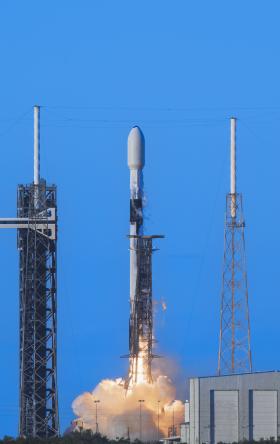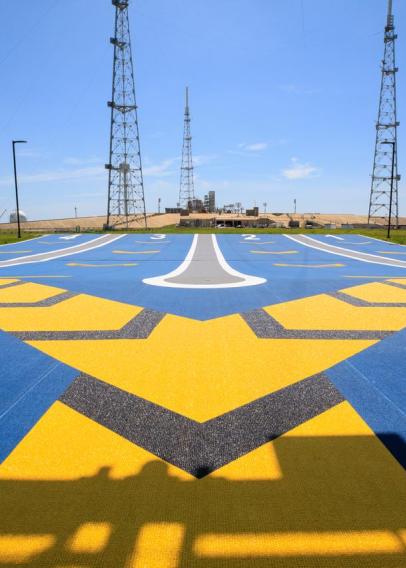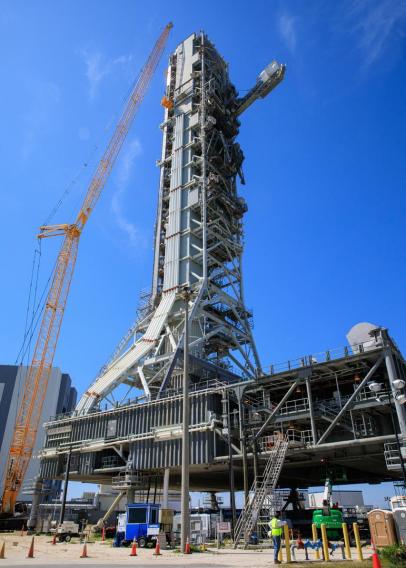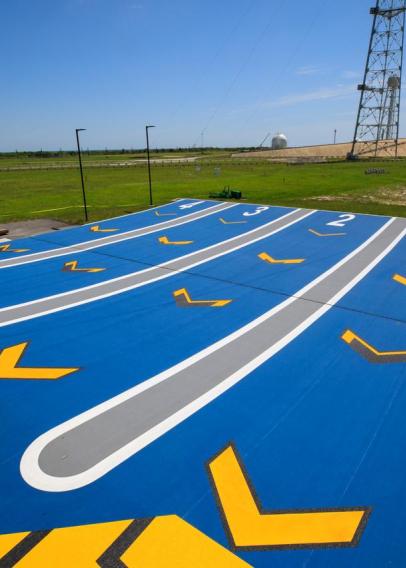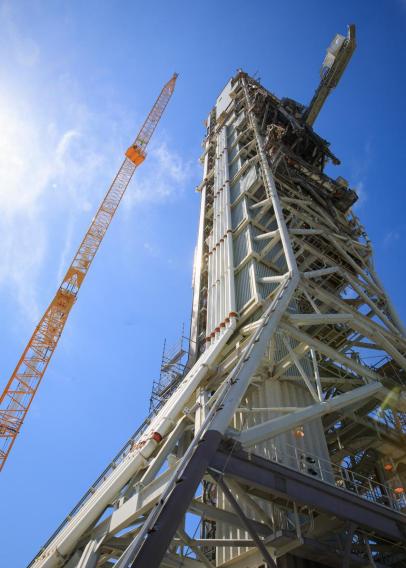Images courtesy of NASA
At Jacobs, we provide critical support to NASA’s human exploration endeavor at multiple field centers around the country. At Kennedy Space Center (KSC), the Jacobs team, which recently was awarded COMET, a follow-on 10-year contract to provide ground and launch operations support, is modifying and updating launch equipment and facilities, software and procedures to reflect the addition of crew on board Artemis II.
The Artemis II mission will be the first crewed flight of the rocket and spacecraft, and Jacobs is working with NASA to prepare the ground systems and operations at Kennedy Space Center to safely launch the 4-person team.
Both the mobile launcher and launch pad 39B must be upgraded to provide an emergency egress system that will allow the crew to make a hasty escape from the pad in the event of a hazardous situation prior to liftoff. This system involves a slidewire basket line descending from the launch tower to a landing zone that is about 1,300 feet away. In addition, the crew access arm on the mobile launcher tower, which provides ingress to the Orion spacecraft, is being updated with a new Environmental Control and Life Support System (ECLSS) to support the onboard flight crew systems.
In the Multi-Payload Processing Facility where the Orion spacecraft is fueled, similar ECLSS systems are being updated. Finally, the launch control team is busy modifying launch countdown procedures to include the crew transport to the pad, crew transfer through the access arm and ingress to the Orion capsule. All of these new systems and procedures will undergo rigorous verification testing ahead of the final launch processing and integration for Artemis II.
Under the new COMET contract at Kennedy, Jacobs is enhancing its focus on operational excellence through key transformational efforts and a robust continuous improvement program. Leveraging new and enhanced digital ecosystem capabilities along with an agile approach to implementation of organization, process and technology changes in the environment, the Jacobs team at KSC will work to make significant improvements in the entirety of the ground system design, implementation, and test lifecycle. The team is also working to improve speed and efficiency of spacecraft and payload processing for the upcoming Artemis missions.
"NASA's Artemis I mission exceeded expectations. Jacobs’ teams at Kennedy and across multiple NASA centers are working hard to make sure Artemis II is just as successful, with a commitment to providing innovative solutions and technologies to ensure the safety of the crew as they orbit the moon and inspire the next generation,” says Jacobs EVP and President Critical Mission Solutions Steve Arnette.
With our NASA portfolio spanning nearly all centers, Jacobs is NASA's largest professional and technical services provider, supporting major programs for space exploration and lunar habitation as well as research, test and facility support.



